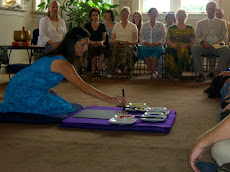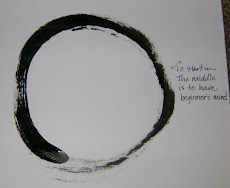Objectives: To support a friend; To give students an opportunity to practice letter writing; To encourage reflection of a daily ritual
Amount of time needed: Three quarters of a class period = 45 minutes.
Directions:
Step 1: Discuss communication modes in present day America, with the main two being email and text messages: Sound bytes. Offer an example.
Step 2: Ask how many students have written a hand-written letter in their life time? How many in the past month? Have they received a letter in the mail? What's the difference between receiving a hand-written letter and an email? How does it feel?
Step 3: Explain that January is National Letter Writing Month. Discuss how to open a letter (salutation). Discuss the differences between a personal letter and a business correspondence.
Step 4: Bring up O.T.O. (Other Than Ourselves, our classroom philosophy). Explain that, as a class, the students\ have the opportunity to help someone out.
Step 5: Explain that a fellow classmate in your grad school program has just changed her thesis idea. Explain that she is going to explore reading aloud to students in the classroom. Ask the students in your class if they would help your friend by writing her a letter about their experiences being read aloud to (because you read aloud to your students for almost a half-hour every day in homeroom). Ask your students to share their experiences so that maybe they can serve as data for your friend (and think to yourself, "or at least put a smile on her face").
Step 6: Give students stationary with hand prints on it and explain that they are offering "helping hands" to your friend.
Step 7: Realize that you have a connection to your fellow classmate in grad school, and now your students do as well - even though they have never met. Continue to realize that your students now have the opportunity to take what they have gotten from their read aloud time, and offer their experiences up to another. Realize, as well, that your thesis topic of ritual has a connection to your friend's new topic. Realize that as your students are writing these letters, they are engaged in self-reflection. Note that that is one of the sub-topics in your own study.
Step 8: Make a MAJOR NOTE about the connections you just drew and that everything you did with your students in that class period today, and what you wrote above, is all connected.
Step 9: Think about James Cameron's Golden Globe's speech:
Avatar asks us to see that everything is connected, all human beings to each other, and us to the Earth.
Step 10: Notice that you were able to offer a lesson on writing, an opportunity for service, time and space for reflection, and that you just got yourself some fodder for your own thesis as well as created an offering for a friend.
Allow lesson plan to linger.





1 comment:
Lovely example of the way one thing leads to another... the butterfly effect... which is a "real" science term interestingly enough... such a great literal display of Parker Palmer's "circle of...whatever" in Courage to Teach.
Post a Comment